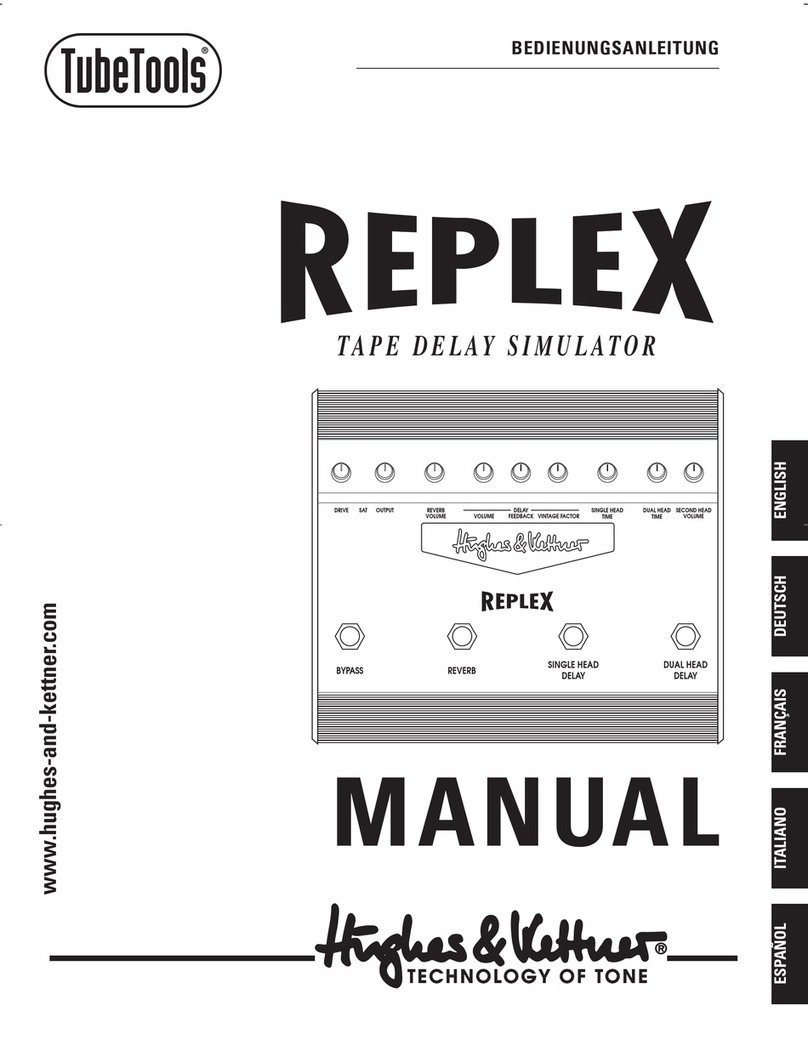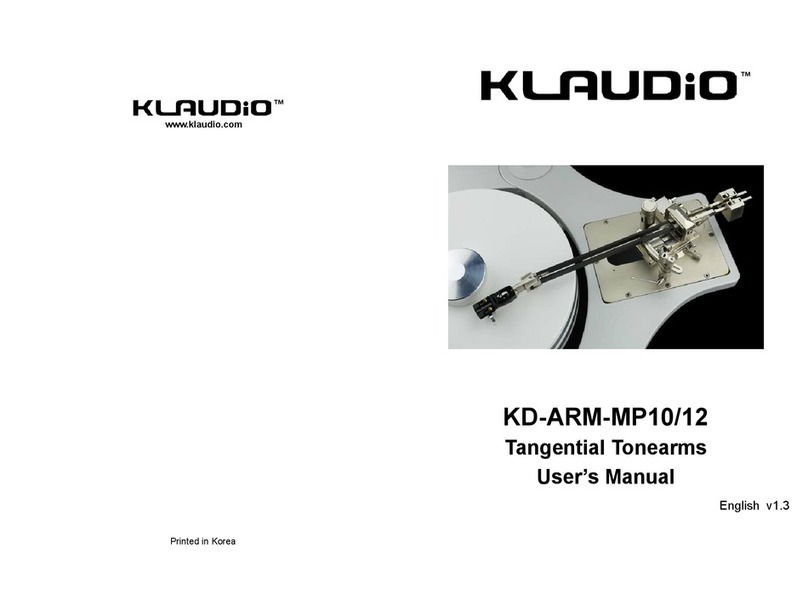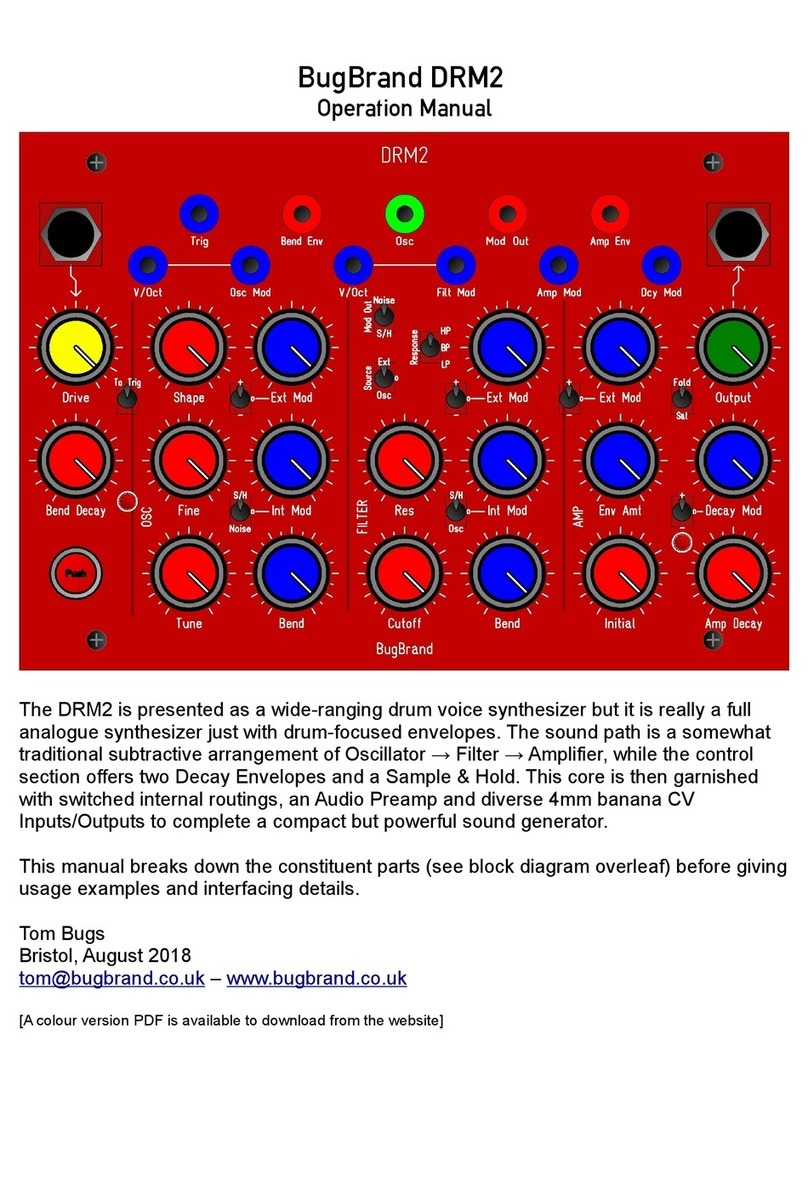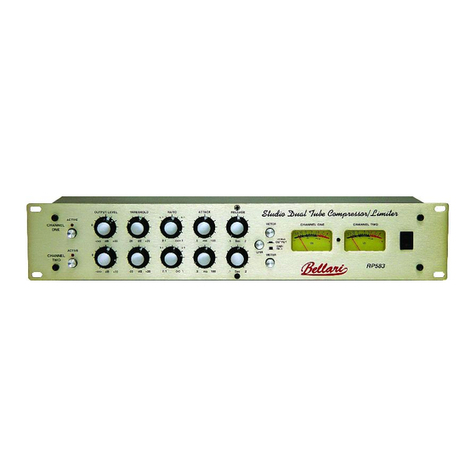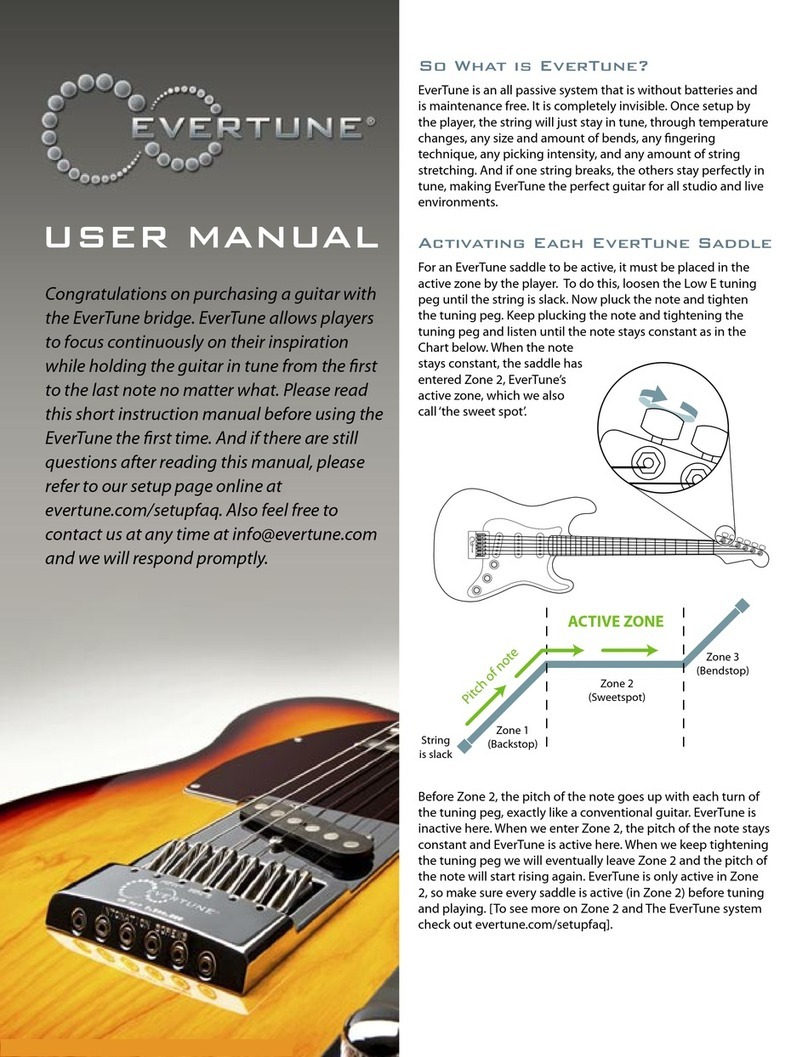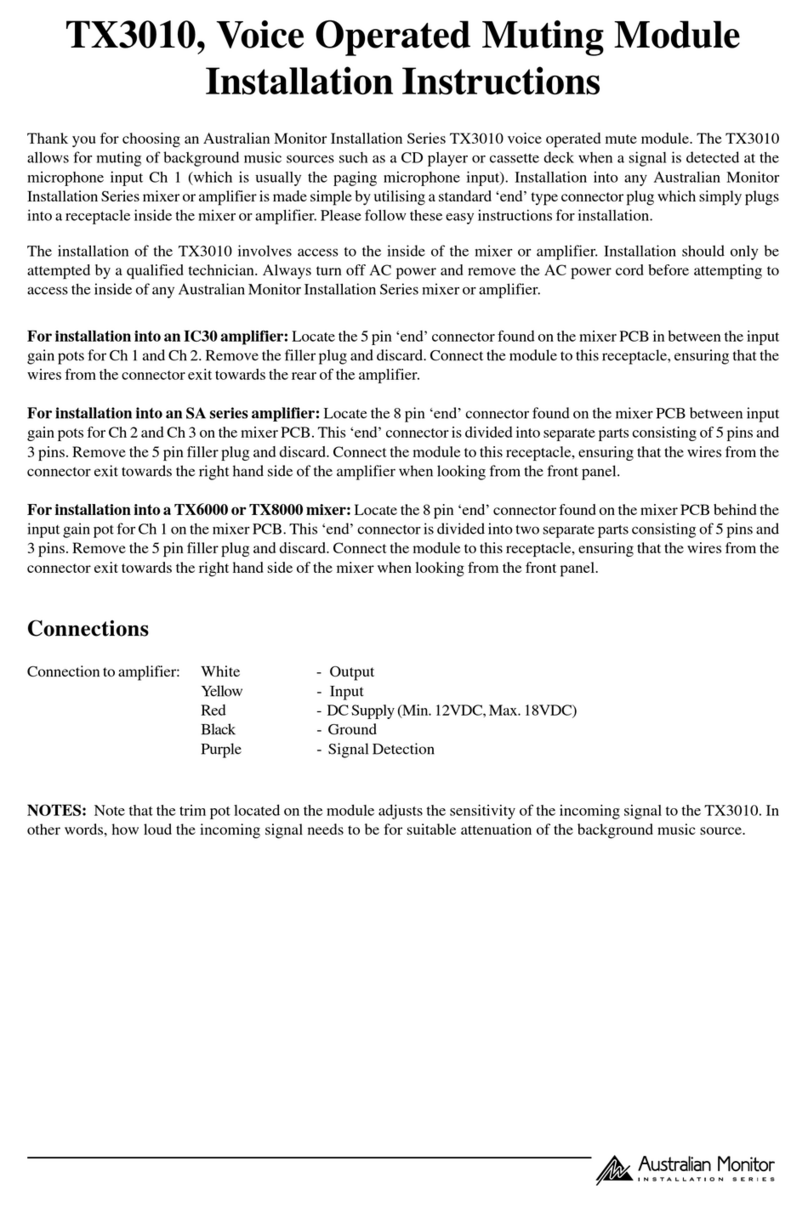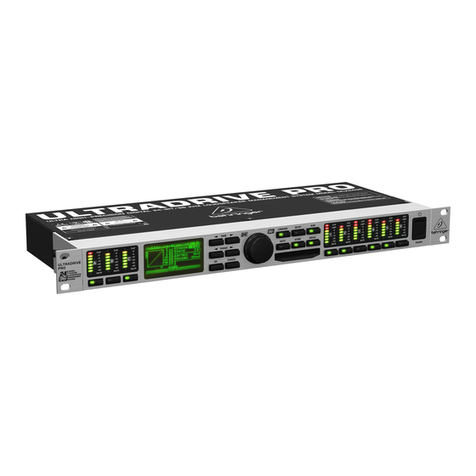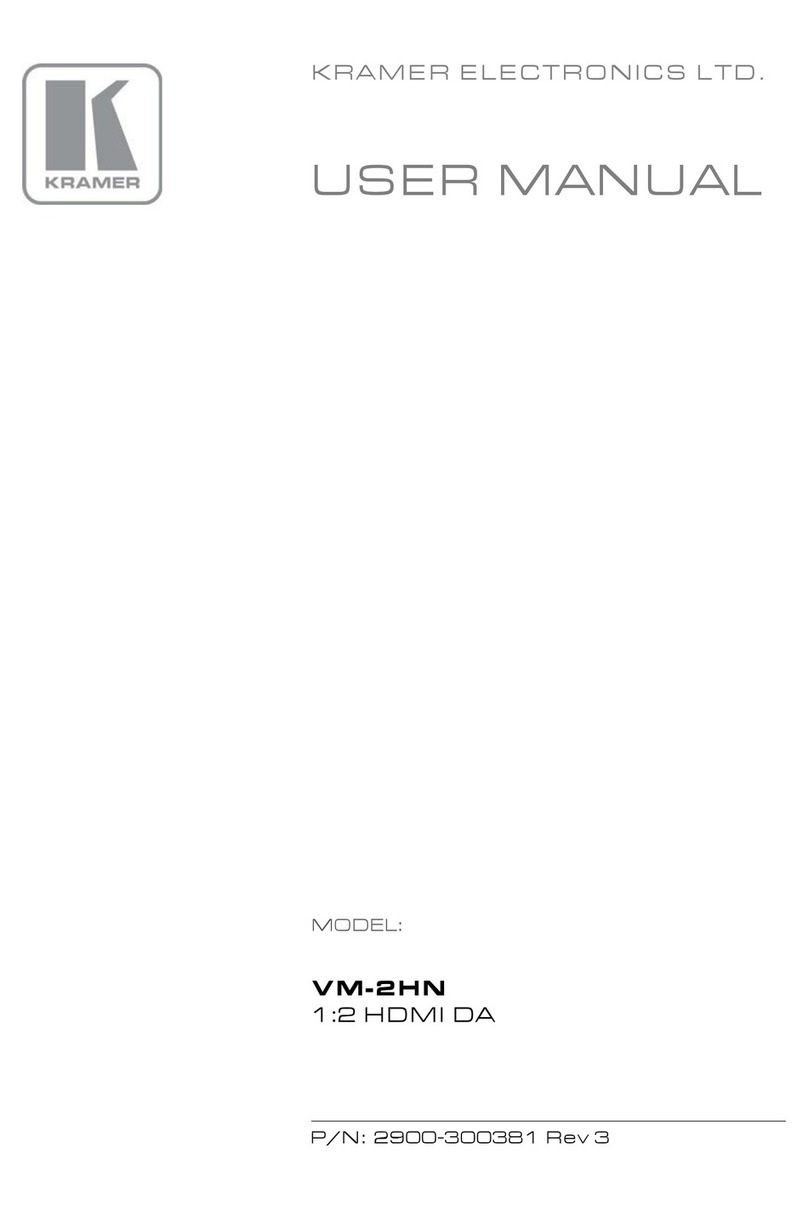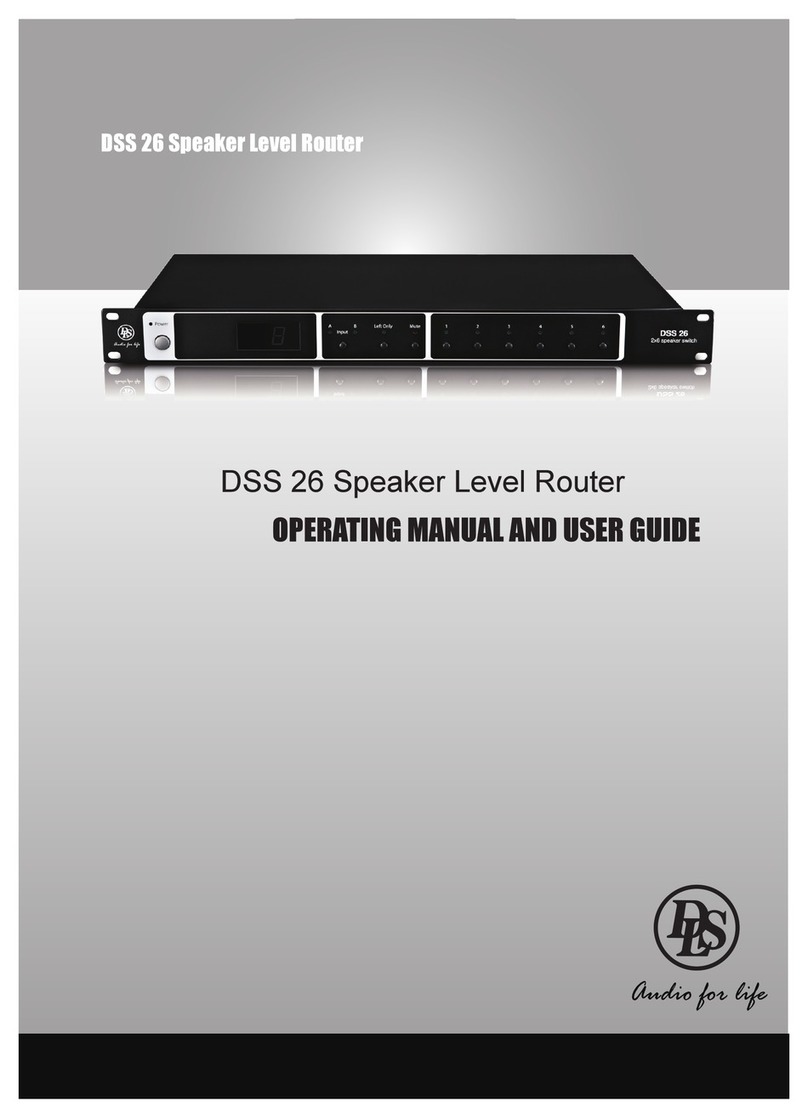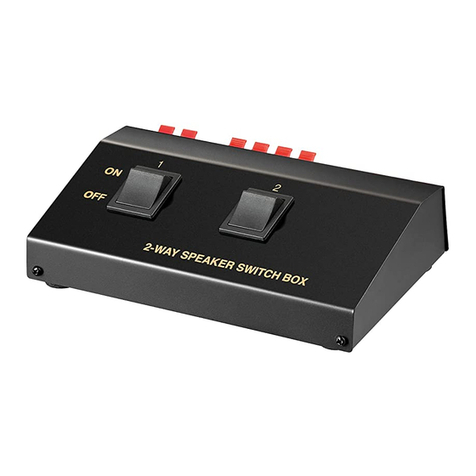Hughes & Kettner TubeMeister 36 User manual

9
Table of Contents
1
Connections and Control Features 10
2
Standard Setup/ Cable Connections 14
3
MIDI 14
4
Tube Safety Control (TSC) 16
5
Technical Specifications 18
english

10
1Connections and Control Features
The TubeMeister 36 features three channels with
dedicated GAIN and MASTER controls. Think
of GAIN and MASTER as the yin and yang of
sound-shaping for all three channels. The best way
to probe the channels’ many sonic possibilities is to
experiment. We recommend that you set the POWER
SOAK to five-watt mode and all knobs to the 12
o’clock position. Then adjust GAIN/MASTER
settings at will to get a taste of the very different
flavors of preamp and power tube distortion. The
further you back off the MASTER knob, the drier the
amp’s sound. The further you turn the knob up, the
juicier the power tube distortion. All of TubeMeister
36’s channels are very responsive to the input signal.
You can conjure a remarkably diverse range of sounds
simply by varying your choice of pickup and adjusting
the guitar’s volume knob.
NOTE: Be advised that you cannot mute the
TubeMeister 36 by turning the MASTER knob all the
way down (to the far left position). If you wish to play
at very soft levels, we recommend that you attenuate
the amp’s overall output by selecting five-watt or one-
watt mode (see POWER SOAK) rather than backing
the MASTER volume way down.
To avoid very loud and unwelcome surprises, make
a habit of backing the Volume knob of the guitar
connected to the TUBEMEISTER all the way down
before switching on the amp.
1.1 Front Panel
POWER/ON
Set this switch to ON to get the mains power
flowing. The amp lights up and the tubes will begin
to heat up.
PLAY/STANDBY Switch
Give the tubes about 30 seconds to get toasty; then
you can flip the STANDBY switch to PLAY. The
amp is now ready to operate. When taking a short
break from playing, please use the STANDBY switch
so the tubes remain at operating temperature. This
protects them and ensures they last longer.
INPUT
Connect your guitar to this input using a shielded
cord equipped with 6.3 mm (1/4") jack plugs.

11
CLEAN Button
Use it to activate the CLEAN channel. Its LED
lights up blue when you do.
GAIN [CLEAN]
The GAIN knob determines the CLEAN channel’s
input sensitivity.
MASTER [CLEAN]
This knob adjusts the CLEAN channel’s volume
without affecting the other channels’ levels.
BASS, MID, TREBLE [CLEAN]
This passive 3-band voicing section controls
the CLEAN channel’s low, midrange and high
frequencies.
CRUNCH Button
Use it to activate the CRUNCH channel. Its LED
lights up yellow when you do.
GAIN [CRUNCH]
This knob controls the amount of tube distortion in
the CRUNCH channel.
MASTER [CRUNCH]
This knob adjusts the CRUNCH channel’s volume
without affecting the other channels’ levels.
LEAD Button
Use it to activate the LEAD channel. Its LED lights
up red when you do.
GAIN [LEAD]
This knob controls the amount of tube distortion in
the LEAD channel.
MASTER [LEAD]
This knob adjusts the LEAD channel’s volume.
BASS, MID, TREBLE [CRUNCH/LEAD]
This is a shared voicing section that controls both
the CRUNCH and LEAD channels.
1.2 Rear Panel
MIDI IN and LEARN
We devoted an entire chapter to MIDI
control. See section 3 to learn more about it.
FOOTSWITCHES
Both CHANNELS and EFFECTS
accept a two-way footswitch equipped with a
standard stereo jack plug, for example the HUGHES
& KETTNER FS-2.
The first switch on the two-way footswitch plugged
into the CHANNELS port selects either CLEAN
or the two overdrive channels; the second switch
activates either CRUNCH or LEAD.
The first switch on the two-way footswitch plugged
into the EFFECTS port switches REVERB on and
off; the second switch enables and disables the FX
loop.
Note: If a footswitch is connected to the CHANNELS
jack plug, you can only activate channels using this
footswitch. In this case, the channel select buttons on
the front panel serve only to indicate the channels’
status. However, you can continue switching channels
via a connected MIDI board.
TIP: You can also connect a MIDI-enabled controller
or foot-switchable board such as the HUGHES
& KETTNER FSM-432 (see section 3). We urge
you to do this. Then you can make the most of the
Power Soak’s potential and use it as a sound-shaping
tool unlike any other you’ve ever experienced. With
MIDI commands, you can switch entire setup – that
is, combinations of different channel, power output,
reverb and FX loop settings – at the touch of a button.
english

12
FX LOOP
This serial loop lets you patch in effects
devices: Connect the SEND jack to your effects
processor's input and the RETURN jack to the
processor’s output. The ON button activates and
deactivates the loop.
TIP: You can also use the SEND jack to tap the
preamp signal, for example, to patch it to another
power amp or a tuner. Conversely, you can use
RETURN to feed signals into the TUBEMEISTER’s
power amp. In combination with the POWER
SOAK and the RED BOX Recording Out, this gives
you a powerful recording front end that offers very
interesting re-amping and sound-shaping options for
just about every conceivable signal.
If you’re a stomp-box user, you may want to try
the four-cord method: For devices that work best
plugged into the front end of the amp, simply
connect the guitar to the input of the first pedal in
the chain and the last pedal’s output to the amp’s
input. Now do the same for devices that work best
in the FX loop: Connect the pedal’s send to the
amp’s FX RETURN and the amp’s FX SEND to the
pedal’s return. This lets you route chorused, phased
and other modulated signals into the TubeMeister
36’s preamp and time-based effects such as reverb
and delay in after the preamp. If your multi effector
features amp models, you can patch these straight to
the TubeMeister 36’s power amp via the FX loop.
HEADS UP: You can bypass the TubeMeister
36’s preamp by routing amp models into the FX
RETURN. However, when you switch channels its
power amp is re-voiced to deliver the best tone for that
channel. This means every channel sounds different
even if you decide to use only the power amp! You
probably want the amp model’s sound and volume to
remain consistent with your original programming. If
so, you’ll have to remember which channel you used
for programming and select it when you activate the
amp model. However, the better option is to program
a MIDI command to do this for you.
REVERB
This knob adjusts the intensity of the
onboard digital reverb. We configured the reverb
circuit so that the effect is more pronounced with the
CLEAN channel than with the overdriven channels.
The ON button activates and deactivates the reverb
effect. You can also switch it using a two-way
footswitch or via MIDI (see the respective sections to
learn more).
RED BOX
Invented by Hughes & Kettner, the
RED BOX has for years set the industry standard for
analog guitar DI boxes with built-in speaker
emulation. It converts the TubeMeister 36’s speaker
out signal, which is tapped post power amp and pre
POWER SOAK, into a balanced, frequency-
compensated signal that you can patch directly to a
mixing console. This signal sounds very authentic
when piped through a PA or studio monitors.
NOTE: Use a microphone cord to patch this signal
to a mixing console. Make sure the mixing console’s
XLR input is set to line level. If the mixing console
lacks XLR inputs or if these cannot be set to line level,
you will need an XLR-to-6.3 mm-(1/4”)-jack adapter
readily available in music stores.
HEADS UP: The channels’ MASTER settings and
the selected POWER SOAK mode directly affect
the signal level: Stepping up to 36 watts from 18
watts changes the RED BOX OUT level as it does
the SPEAKER OUT level. Stepping down from 18
watts to 5 watts, 1 watt and Speaker Off (for silent
recording) does not change the level! So you can
step up from 18 watts to 36 watts on the fly (via

13
MIDI), for example, to boost the volume for leads
when playing live. The level of the signal sent to the
RED BOX OUT (and to the mixing console) will be
bumped up accordingly. The signal level of the 18W,
5W, 1W and SPEAKER OFF modes remains the
same for a very good reason: That way you can choose
the right SPEAKER OUT level for the rehearsal
room, home practicing and silent recording without
having to adjust MASTER knob settings.
TSC
We devoted an entire chapter to the
TUBE SAFETY CONTROL. See section 4 to learn
more about it.
POWER SOAK
Use these buttons to adjust the
TubeMeister 36’s output power and set its basic
volume level. This feature lets you enjoy the benefits
of full-blown power amp saturation at low volume so
you can play at home in your living room without
alienating the neighbors. Its silent recording
capability lets you capture genuine tube-driven tone
via a mixing console without having to drive
speakers. And if you want to rehearse in silence any
time day or night, simply plug a set of headphones
into the mixer.
None of the buttons in this section light up when
the amp is in ‘normal’ operating mode (36 watts of
output power). When you press the 18W button,
TSC disables two tubes to reduce the output power
by half to 18 watts. When you press the 5W and 1W
buttons, some of the power is converted into heat
to further reduce the output by 5 watts and 1 watt,
respectively. In Speaker Off mode, all the power is
converted into heat and the amp is muted.
The POWER SOAK is not just about managing
volume; it’s also about conjuring the right tone
and response. For modern sounds that demand
fast, tightly focused response with less power tube
saturation, set the POWER SOAK to full power
and turn the MASTER knob down. If you want
classic rock sounds replete with spongier power tube
saturation and creamier tone, drop the POWER
SOAK down to a lower setting and crank the
MASTER knob to give those power tubes a workout.
If you have connected a MIDI board, you can assign
a separate power amp mode to each channel. This
lets you do things like conjure classic rock tone by
running the CRUNCH channel in a lower power
mode with the MASTER cranked to saturate those
power amps. Then you could operate the LEAD
channel at full power and with a lower MASTER
setting to coax more modern sounds out of the amp.
Note that if you choose to mute the amp, you do
not need to connect a speaker to the TubeMeister
36’s SPEAKER OUT. Designed to enable silent
recording, this option provides the full signal to
the RED BOX output. To protect the power amp,
TubeMeister automatically engages this mute circuit
as soon as the plug is pulled from the SPEAKER
OUT port.
HEADS UP: TSC shuts down one pair of tubes to cut
the power from 36 to 18 watts (see section 4), which
is why two TLC LEDs always light up when the amp
is in 18W, 5W, 1W and Speaker Off modes. TSC is
simply indicating that two tubes are off, and not that
it has detected a fault.
NOTE: If you select the POWER SOAK mode
manually, this will affect all channels globally. The
MIDI option (see chapter 3) is a different matter
altogether: It lets you store the POWER SOAK mode
locally for any given channel or even in a MIDI preset.
This means you can switch the output power level on
the fly simply by tapping your foot board. And that
makes the POWER SOAK a sound-sculpting tool that
you can use creatively on stage.
english

14
SPEAKER
Connect a speaker cabinet designed for
guitar amps to this jack. Using a single speaker cord,
you can connect any cabinet or combination of
cabinets whose total impedance ranges between 8 Ω
and 16 Ω. The formula below serves to calculate the
overall impedance (R) of two cabinets with different
impedances (R1 and R2)
For cabinets wired in series: R = R1 + R2
Example: If you connect two 8-Ω cabinets, the
overall impedance is 16 Ω. However, very few
modern cabinets are wired in series. Parallel circuits
are far more common.
For cabinets wired in parallel:
R = (R1 x R2) / (R1 + R2)
Here is an example with two 16-Ω cabs:
R = (16 x 16) / (16 + 16)
R = 256 / 32
R = 8
HEADS UP: On the Combo version, this jack is
already occupied by the internal speaker. Feel free to
disconnect this speaker from the SPEAKER OUT jack
and connect another cabinet designed for guitar amps.
MAINS IN
Connect the factory-included power cord (MAINS
LEAD) to this socket. The shaft holding the mains
fuses is located next to this socket. Replacing blown
fuses is a job to be carried out by fully qualified
technicians only using exclusively the specified
replacement fuses (see Technical Specifications).
2Standard Setup/ Cable Connections
FX/Reverb
Channels
MIDI
Send Return
FX-Unit
Red Box DI Out
Stage or Recording Mixer
3MIDI
TubeMeister 36 is equipped with a 7-pin MIDI port.
Two of the pins serve as a phantom power supply,
providing 20 volts of direct current to power a device
such as the Hughes & Kettner FSM 432 without
requiring an additional wall-wart. A standard 5-pin
connector does not tap this phantom power feed, so
you can use a cable equipped with this type of plug
to connect any standard MIDI board.
With TubeMeister 36’s MIDI facility, command
and control is an exercise in convenience with lots of
intriguing switching and storage possibilities. Given
a MIDI-enabled controller, foot board or multi-
effector and a fistful of MIDI presets (see below),
you can dip into the TubeMeister 36’s deep sonic
well and pull up any conceivable combination of the
following functions at the tap of a toe:
One of the 3 channels CLEAN, LEAD, CRUNCH
+ FX-LOOP on/off
+ REVERB on/off
+ The full 36W or one of the POWER SOAK stages
18W, 5W, 1W or Speaker Off

15
3.1 Programming
Programming couldn’t be any easier. If you want
to save a configuration such as CRUNCH with
BOOST, FX LOOP and 18W activated, simply
activate this combination on TubeMeister 36. Arm
the amp by briefly pressing the MIDI LEARN
button (LEARN lights up), and then send the
number of the program slot where you want to store
this setup by pressing the appropriate switch on your
MIDI board. The LEARN light extinguishes to
indicate TubeMeister 36 has saved this configuration
to one of the 128 internal program slots and assigned
it to a preset on your foot board. To discontinue
programming without saving settings, simply press
the button again.
Now when TubeMeister 36 receives a program
change message via the selected MIDI channel
(more on this below), LEARN flashes briefly and
TubeMeister 36 is configured accordingly.
TIP: This lets do some pretty exotic stuff on stage:
You could use the same killer tone at 18 watts for your
rhythm work and at 36 watts for leads, and switch
between the two on the fly. Or you could assign a
different power stage to each channel, say the full 36
watts to CLEAN, 5 watts to CRUNCH and 18 watts
to LEAD.
3.2 Setting the MIDI Channel and
Switching OMNI On/Off
Flip the PLAY/STANDBY switch to STANBY. Now
press and hold the two ON buttons for FX LOOP
and REVERB simultaneously. They will flash after
about three seconds.
This assigns special programming functions to the
following LEDs and buttons:
Now serves as a +1/up button. The factory
default is MIDI channel 1.
18W
Now serves as a -1/down button.
LEARN [MIDI]
Switches OMNI on/off. LEARN lights up to
indicate TubeMeister 36 is configured to receive
incoming program changes via all MIDI channels
(default). If the LED is not illuminated the amp
receives messages via the selected channel only.
NOTE: OMNI enables reception on all channels.
This option is a good choice if you’re unsure which
channel your foot board uses to send messages.
When configuring MIDI setups, the four POWER
SOAK LEDs serve to indicate the MIDI channels.
Consult the table below for the MIDI channel
assignments. They are shown what in tech-speak is
called binary code:
MIDI-
Channel 18W 5W 1W
Speaker
Off
1
2
3
4
5
6
7
8
9
10
11
12
13
14
15
16
english

16
Press and hold the two ON buttons for FX LOOP
and REVERB simultaneously for more than three
seconds to save the settings and quit MIDI setup
mode. The buttons will stop flashing to indicate the
amp is back in normal operating mode.
3.3 Factory Settings and How to
Restore Them (Factory Reset)
To reset the amp to the factory default settings,
press and hold the REVERB ON and FX LOOP
ON while powering up simultaneously until the
MIDI LEARN button lights up. After you release
the ON buttons, MIDI LEARN will flash once
to confirm that the reset has been executed properly.
The factory defaults are:
• OMNI ON
• MIDI Channel 1
The factory default settings and assignments for
sounds are:
MIDI
Program
Preamp
Channel
Power
Output
FX
Loop REVERB
1Clean36WOFFON
2 Crunch 36 W OFF OFF
3 Lead 36 W OFF OFF
4Clean0WOFFOFF
5Clean18WOFFON
6 Crunch 18 W OFF OFF
7 Lead 18 W OFF OFF
8Clean0WOFFOFF
9Clean5WOFFON
10 Crunch 5 W OFF OFF
11 Lead 5 W OFF OFF
12 Clean 0 W OFF OFF
13 Clean 1 W OFF ON
14 Crunch 1 W OFF OFF
15 Lead 1 W OFF OFF
16 Clean 0 W OFF OFF
4Tube Safety Control (TSC™)
TSC™ adjusts bias to improve the amp’s tonal and
technical stability and extend power tubes’ life. It
does this automatically and continuously, so there is
nothing for you to do but enjoy the convenience.
Swapping tubes is more easily, quickly, and safely
done than with a conventional amp. This is a big
help not only in case of a defect, but also when you
want to compare different brands of replacement
tubes.
CAUTION: Replacing tubes is a job for qualified
professionals! TSC™ merely spares the technician the
biasing effort.
What do the LEDs indicate?
Each LED is assigned to the power tube occupying
that same position. Getting a read-out of tubes’
operating status and bias points is easy using any
standard guitar pick.
4.1 Automatic Status Indications:
All LEDs Light Up And Stay On
All LEDs remain on for as long as the amp is in
standby mode. When you flip the STANDBY
switch to PLAY, they will extinguish after about 30
seconds. If the LEDs remain illuminated, the most
likely cause is a blown anode fuse that needs to be
replaced by a technician. The anode fuse can trip if
a tube is already defective when the amp is switched
on, and TSC does not have enough time to measure
idle current and shut the faulty tube down.
None of the LEDs Lights Up
The power tubes are operating normally.
One LED Lights Up Continuously
The tube assigned to this LED is not delivering
enough current and has been shut down. If the LED
does not extinguish after a few minutes, this tube
must be replaced.

17
Two LEDs Light Up Continuously
This tells you one of two things: Either these tubes
are not delivering enough current and has to be
replaced (see the instructions for one illuminated
LED), or the Power Soak is active. In the latter case,
two tubes are switched off automatically and the two
illuminated LEDs are indicating this.
One LED Flashes, Another Lights Up
Continuously
The tube assigned to this flashing LED is generating
too much current. It has been shut down and has to
be replaced. In this type of power amp, it takes a pair
of tubes working together to produce the best sound.
The defective tube’s counterpart has been switched
off so it doesn’t degrade the other pair’s tone. This
tube’s LED lights up continuously to indicate it
has also been shut down, but there is no need to
replace it. You can continue playing, though output
is halved from 36 to 18 watts for as long as the LED
remains illuminated. If this occurs in a conventional
amp, its fuse usually trips and you can’t operate it
until you replace the tube and fuse.
4.2 Manual Read-Out
TSC™ checks tubes’ bias points to let your determine
if pairs match. This is easily done by inserting a pick
into the appropriate slot while the amp is on (rather
than in STANDBY mode). The LEDs will flash.
How many times the LEDs flash matters, but what
matters more is the difference in flash counts. TSC
will ensure optimum sound if the difference is no
greater than four flashes. If the difference in flash
counts is greater than four, we recommend installing
a matched set of tubes to improve the tone. This is
strictly a matter of tone - technically speaking; the
amp will continue to operate safely.
HEADS UP: The two inside tubes and the two
outside are matched pairs. If just a single tube is
swapped, ensure the replacement tube’s rating matches
that of its counterpart. If all tubes are replaced, ensure
they all share the same ratings.
The table below shows Hughes & Kettner tube
ratings and how flash counts translate to a rating.
For example, if the TSC display flashes six times
you need a tube with an S2 rating. The chart also
tells you that its bias point is set to 13 volts. You can
buy a replacement tube from your local dealer. The
original Hughes & Kettner rating (S1-S7, 0-12) is
shown on a sticker on the tube.
Flashes Rating Bias [V]
1S710
2S610.6
3S511.2
4S411.8
5S312.4
6S213
7S113.6
8014.2
9114.8
10 2 15.4
11 3 16
12 4 16.6
13 5 17.2
14 6 17.8
15 7 18.4
16 8 19
17 9 19.6
18 10 20.2
19 11 20.8
20 12 21.4
21 * 22
22 * 22.6
23 * 23.2
24 * 23.8
25 * 24.4
english

18
5Technical Specifications
TubeMeister 36 Head & Combo
Preamp tubes: 3 x 12AX7 / ECC83
Power tubes: 4 x EL84
Power output: 36 watts
Max. power consumption: 200 watts
Mains voltage tolerance range: +-10%
Ambient operating temperature range: 0° to +35° C
Mains fuse, 100 volts: 250 V / T 2 A L
Mains fuse, 120 volts: 250 V / T 1.6 A L
Mains fuse, 220-230 volts: 250 V / T 800 mA L
Mains fuse, 240 volts: 250 V / T 800 mA L
Input jack: 6.3 mm (1/4"), unbalanced, 1 MΩ
Send jack: 6.3 mm (1/4"), unbalanced, 250 Ω, max. + 6 dBV
Return jack: 6.3 mm (1/4"), unbalanced, 45 kΩ, -3 dBV
RED BOX Out: XLR, balanced, 1360 Ω, max +9 dBV
Speaker Out: 6.3 mm (1/4"), 8 to 16 Ω
Footswitch Channels: 6.3 mm (1/4"), stereo, tip=Channel, ring=Boost
Footswitch Effects: 6.3 mm (1/4"), stereo, tip=Reverb, ring=FX Loop
MIDI In 7-pin, 20 V DC phantom power, 5-pin compatible
TubeMeister 36 Head
Dimensions: 446 x 171 x 152 mm
Weight: 7.7 kg
TubeMeister 36 Combo
Dimensions: 39 555 x 475 x 269 mm
Weight: 19.4 kg
Speaker: 12" Celestion Vintage 30

19
english
Other manuals for TubeMeister 36
1
Table of contents
Other Hughes & Kettner Music Equipment manuals
